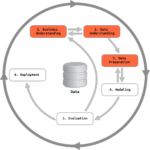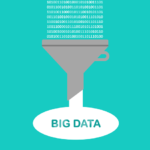Data mining is the process of finding anomalies, patterns and correlations within large data sets to predict outcomes.
As we know, companies use this process to turn raw data into useful information.
Firstly, it depends on effective data collection, warehousing and computer processing.
Most importantly, we use data mining processes to build machine learning models that power applications. Applications include search engine technology and website recommendation programs.
In other words, we can say that it is the process of investigating hidden patterns of information.

Why is data mining important?
So, why is data mining important? We know, the amount of data that is generated every day. It doubles every two years.
To clarify, unstructured data alone makes up 90 percent of the digital universe. But, more information does not necessarily mean more knowledge.
This allows you to:
- Firstly, it extracts, transforms, and then loads transaction data onto the data warehouse system.
- Secondly, it stores and manages the data in a multidimensional database system.
- Moreover, it understands what is relevant and then make good use of that information to assess likely outcomes.
- In addition, it accelerates the pace of making informed decisions.
In short, this technique is a game changer in the world of statistical analysis and business. This is important in this area because it can lead to the assumption that the techniques of the old analysis were simply not capable.
Who’s using it?
- Telecom, Media & Technology
- Insurance
- Education
- Manufacturing
- Banking
- Retail
Types of Data Mining
- Relational Database
It is a collection of multiple data sets formally organized by tables, records, and columns. Therefore, data can be accessed in various ways without having to recognize the database tables.
2. Data warehouses
It is a technology that collects data from a variety of sources within the organization to provide meaningful business insights.
3. Data Repositories
It refers to a destination for data storage.
4. Object-Relational Database
A combination of an object-oriented database model and relational database model is called an object-relational model.
5. Transactional Database:
It refers to a database management system (DBMS) that has the ability to undo database transactions if not properly executed.
Advantages of Data Mining
- It enables organizations to obtain knowledge-based data.
- This enables organizations to make attractive changes in operation and production.
- It is a cost-efficient.
- This helps the decision-making process of an organization.
- Also, it empowers businesses to optimize the future by understanding the past and present, and making accurate predictions about what is likely to happen next.
Disadvantages of Data Mining
- It is not precise, so it can have serious consequences in certain situations.
- It is possible that the organization could sell useful customer data to other organizations for money.
- The information gathered may be inaccurate as there may be difficulties in making decisions.
Summary
In conclusion, current data mining is done primarily on simple numeric and categorical data. In the future, it will include more complex data types.
Moreover, research in data mining will result in new methods to determine the most interesting characteristics in the data.
So, in this article, we explained about data mining, its advantages, disadvantages and more.






















[…] Data Mining Companies store data primarily for the purpose of data mining. This entails searching for data trends that will aid in the improvement of their company processes. […]